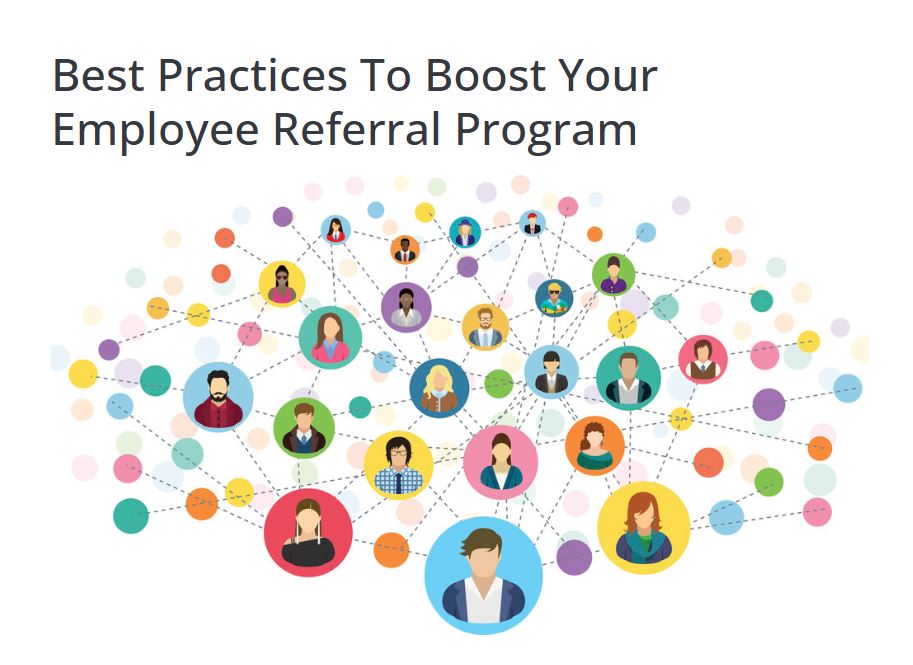
Best Practices To Boost Your Employee Referral Program
At their best, referral programs can reward your employees, expand your labor pool and reduce overall recruiting costs.
A referral program is a talent acquisition strategy in which current employees are asked to recommend their network connections for job openings. Referral programs often compensate employees for successful hires.
The software company FormAssembly highlights key advantages of referral programs, including an increased sense of belonging among employees and referrals. Other benefits include:
- A faster hiring process. Referred candidates are five times more likely to be hired.
- Reduced spending on job advertising and recruiters. Employee referrals can reduce hiring costs by more than $7,500 per hire.
- Improved cultural fit and retention rates. Referred talent stays 35% longer than other hires. Almost half of all referred hires remain with an organization for more than four years.
The human resources association SHRM notes that referral programs can be used to deepen your talent pipeline even when they don’t lead to immediate hires. They can also engage passive job seekers who may otherwise overlook job openings.
Metrics for success often include increases in time-to-hire and quality-of-hire rates, retention levels, employee morale, and recruiting expenses.
Use the following practices to build or enhance your employee referral program:
- Simplify your processes.
- Explore strategies and rewards.
- Promote the program to all employees.
Simplify your processes
A successful program requires simplicity and transparency. FormAssembly recommends defining and communicating eligibility, terms and incentives.
SHRM says a fast, user-friendly process will increase employee participation and expand your talent pool. Ensure recruiters or hiring managers are contacting referrals within 24 to 48 hours.
Create a standard referral form that can be submitted by email, company website, intranet page or paper. SHRM recommends only asking for basics such as:
- The employee’s name and contact information
- The referred candidate’s name and contact information
- The job being applied for
Limiting the initial information saves time and makes it easier for employees to provide contacts. Your HR and recruiting teams can ask necessary follow-up questions without burdening the initial process.
The management software company Pipedrive highlights the importance of clarity. Be clear and concise about:
- Job descriptions and duties
- Required experience and degrees
- Preferred certifications and skills
This information helps employees identify appropriate professional contacts. It helps referred candidates understand the role. It also supports hiring managers who are looking for the right fit. Clarity saves time and effort on all sides.
The human resources certificate academy AIHR recommends updating employees on the status of their referrals. Sending short updates on whether candidates are being considered, interviewed, or hired motivates employees and makes them feel more connected to the process. It can also save time and effort for your HR and recruiting teams by preventing them from having to field questions from curious employees and candidates.
To keep the program top of mind for employees, send regular reminders about incentives and open job positions.
Explore rewards and strategies
Experimentation and adaptation can bolster your referral program. Pipedrive recommends trying different rewards and strategies depending on your needs.
You may offer higher incentives when introducing the program, in times of high need, for difficult-to-hire roles or during hiring sprees. Common rewards include:
- A cash bonus between $1,000 and $2,500 per hired referral
- An extra day of PTO
- A gift card or gift basket
- Company recognition in a newsletter or staff meeting
Pipedrive reports that some organizations double their typical referral incentives when their needs are greater.
AIHR says a process of trial and error is a necessary and ongoing part of refining referral programs. Strategies could include:
- Asking new hires for their top referrals
- Hosting referral happy hours with employees’ contacts
- Gamifying referrals through a system of points and prizes
- Offering to split part or all of a referral bonus with the employee’s choice of charity
Strategies may depend on your workforce size, hiring needs, program incentives and workplace culture. Expect variation over time. Even successful programs need to refresh incentives and communications.
Promote the referral program to all employees
Communicate regularly with your entire workforce about your referral program. One way to expand your reach is to publicly thank employees for referrals. Express gratitude in staff meetings, newsletters and other internal communications. This step rewards participating employees and raises awareness among colleagues.
A robust communication strategy doesn’t just expand awareness. It also diversifies your referral candidates.
SHRM warns against cliques, demographic imbalances, and unintentional discrimination that can occur if only a small portion of your employees participate in the referral program. Similarly, if your current workforce is very homogeneous, referrals from current employees may bring more of the same.
SHRM recommends tracking your program to see who is making referrals and who is being interviewed and hired. These metrics could expose gaps and opportunities. Evaluate referred candidates using the same criteria as others. Preferential treatment for referrals can lead to homogeneous workforces and thought processes.
Communicate your referral program widely and transparently. Don’t limit your promotion to select divisions, departments, teams or individuals. Encourage employees to think beyond their immediate circles and consider candidates throughout their professional networks.
Explore your solutions
An effective referral program delivers individual and organizational rewards. Talk to your benefits adviser for more information on building or refining your recruiting strategies. They can support your internal efforts and connect you to external hiring solutions.


